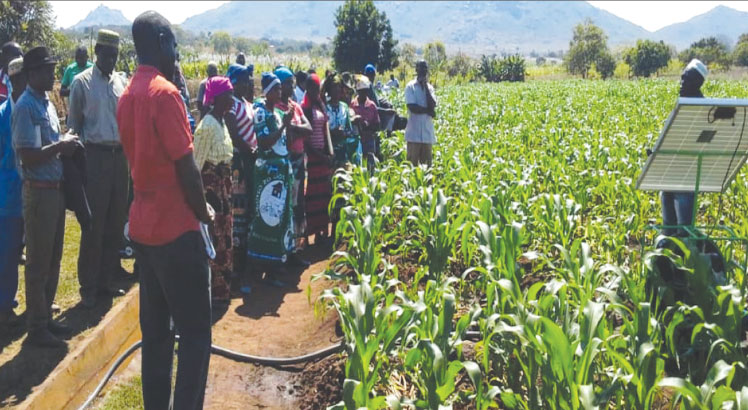At least 3.82 million people in Malawi face hunger this year, the Malawi Vulnerability Assessment Committee (Mvac) reports.
This is despite the country having over 408 863 hectares of irrigable land to boost food security.
According to the National Irrigation Master Plan and Investment Framework unveiled in 2015, government needs about $2.4 billion to irrigate about 220 000ha by 2035.
Malawi only ultilises less than half of its irrigable land
The policymakers envision this investment lessening dependency on rain-fed agriculture amid climate change.
However, only 104 362ha was being utilised in 2015. This means just over a quarter of the potential irrigable land was being put to productive use.
Currently, the Ministry of Agriculture indicates that the figure has slightly risen to 146 966ha for both private estates and smallholder farmers. This means farmland under irrigation has risen by 10 percent in seven years.
Is this progress anything to smile about?
“I would say we are in the right direction,” says Dr Grivin Chipula, head of agricultural engineering at the Lilongwe University of Agriculture and Natural Resources.
He commends government for rolling out various irrigation projects, including the Shire Valley Transformation Programme, Bwanje Valley Irrigation Scheme and the Programme for Rural Irrigation Development (Pride).
“All these are adding remarkable hectarage to meet the target,” he says. “The Shire Valley project alone adds over 40 000ha. If we add 800ha in Bwanje and the other hectarage from Pride, surely, we should meet the target.”
John Bvutula, irrigation specialist at the Karonga Agricultural Development Division (Kradd), says the country can achieve the lofty target if it maintains the momentum.
Kradd covers Karonga and Chitipa, where only 3 000ha of the 21 000ha irrigable land is developed for the purpose. Currently, Pride is developing two schemes totalling 300ha in Chitipa.
Bvutula states: “This is not enough, but we need a lot of funds to develop a scheme. We need a lot of money.
“To develop a gravity-fed scheme, we need about $10 000 per hectare. If more donors support government, we can develop all the potential land.”
However, Chipula says the success of the national dream does not lie in how much land developed for irrigation, but how farmers ultilise existing schemes.
“If we randomly pick 10 schemes, do we see all the land being utilised or its just 10 percent? If we ultilise all the land in irrigation sites, we will be on the way to becoming food secure,” he says.
Rudolf Nkhata’s study showed that Bwanje Valley Irrigation Scheme had a positive impact on efforts to reduce hunger and poverty in surrounding communities.
The researcher recommended the up-scaling of irrigation investment to other areas with irrigation potential for farmers to get two to three harvests a year.
Mechanisation
But it is not easy to ultilise all irrigable land using a hoe, a symbol of Malawi’s hand-to-mouth farming.
Chipula recommends a shift from handheld instruments to farm machines, including tractors and harvesters.
“How do you expect farmers in Bwanje Valley to utilise all the 800ha with hoes?” he asks.
Irrigated land is also underutilised due to poor water management in the schemes, the engineer states.
“With climate change, water is becoming scarce. Yet some farmers lack water-saving skills. As a result, some schemes have run dry; reducing the area being utilised,” he notes.
Chikondi Makwiza, another irrigation specialist from Luanar, says farmers are not efficiently ultilising existing irrigation schemes.
“We aren’t using our schemes as commercial enterprises as do other countries. Instead of using them as commercial entities, we divide them among the smallholder farmers who seldom using the small plots efficiently,” he says.
The 2020 Integrated Household Survey shows that smallholder farmers constitute 80 percent of Malawi’s population.
Cooperatives
For agricultural experts, forming cooperatives, not village-based clubs, would help farmer rip better benefits from irrigation schemes in use.
Chipula argues: “We have the water users’ associations running the schemes, but cooperatives are the money side of the schemes. Farmers sell their produce in bulks instead of selling it on cheap as individuals.
“As a cooperative, the farmers can get loans to buy machines for commercial farming as well as farm inputs such as quality seed and fertliser.”
The post Starving on irrigable land appeared first on The Nation Online.
 Moni Malawi
Moni Malawi 

